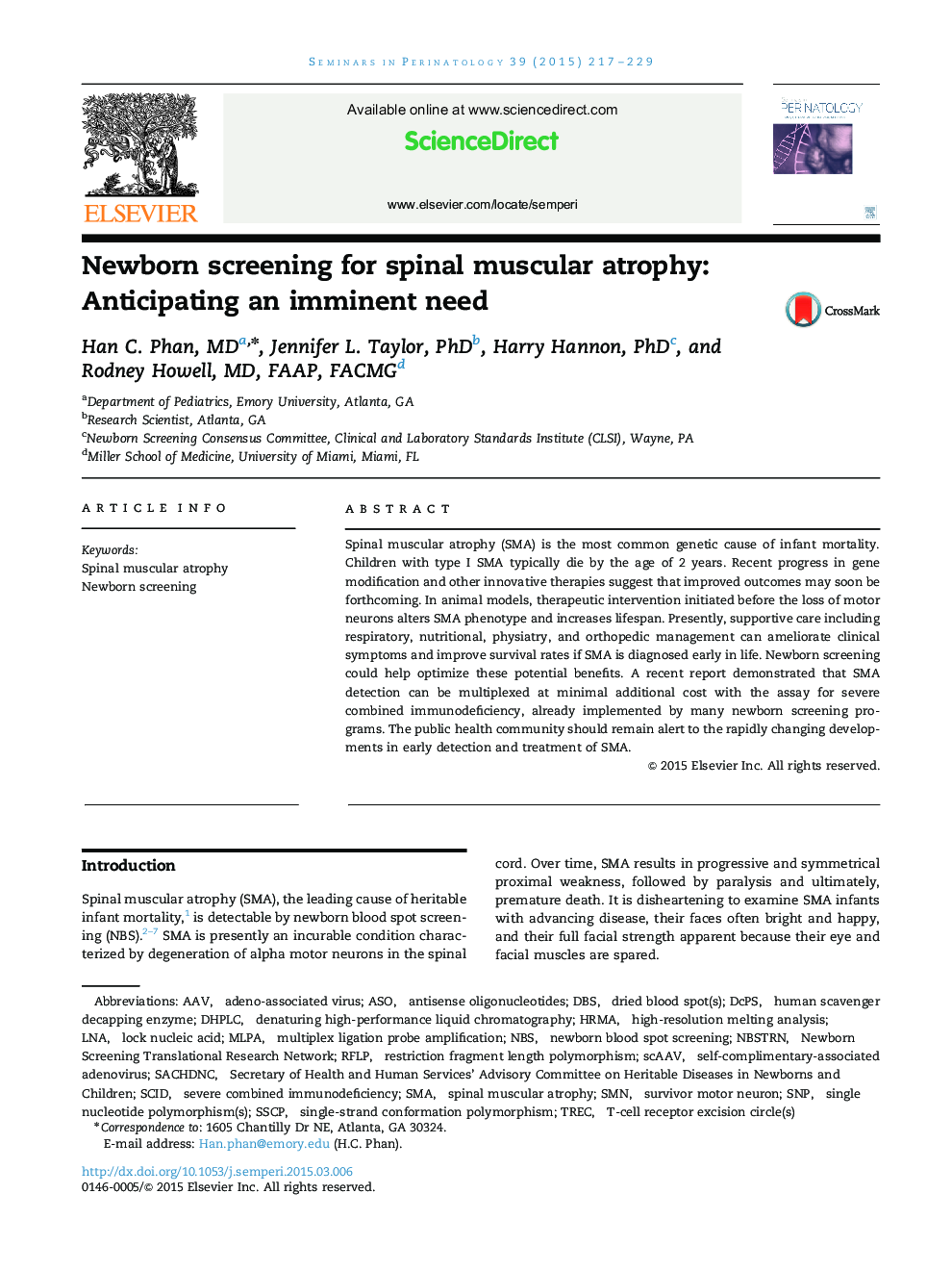| Article ID | Journal | Published Year | Pages | File Type |
|---|---|---|---|---|
| 6155773 | Seminars in Perinatology | 2015 | 13 Pages |
Spinal muscular atrophy (SMA) is the most common genetic cause of infant mortality. Children with type I SMA typically die by the age of 2 years. Recent progress in gene modification and other innovative therapies suggest that improved outcomes may soon be forthcoming. In animal models, therapeutic intervention initiated before the loss of motor neurons alters SMA phenotype and increases lifespan. Presently, supportive care including respiratory, nutritional, physiatry, and orthopedic management can ameliorate clinical symptoms and improve survival rates if SMA is diagnosed early in life. Newborn screening could help optimize these potential benefits. A recent report demonstrated that SMA detection can be multiplexed at minimal additional cost with the assay for severe combined immunodeficiency, already implemented by many newborn screening programs. The public health community should remain alert to the rapidly changing developments in early detection and treatment of SMA.
